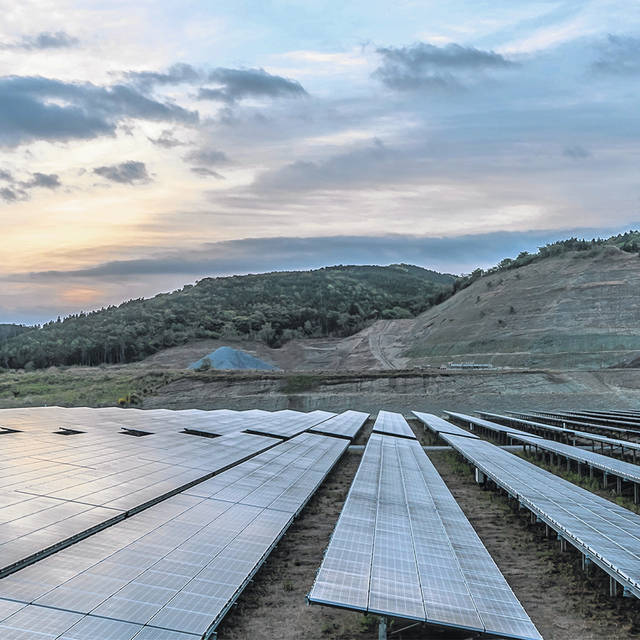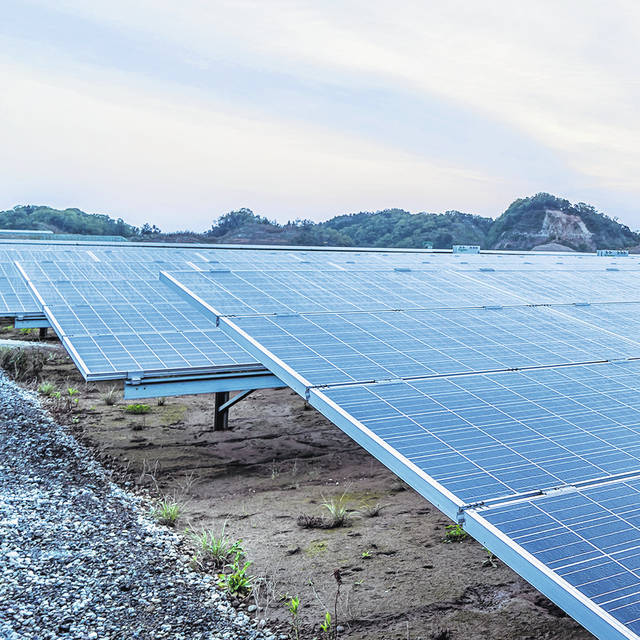

Developers of a potential utility-scale solar project have begun reaching out to landowners and local government officials in Champaign County.
Pattern Development, part of Pattern Energy, is considering constructing a facility using solar panels to generate electricity to feed into the regional power grid.
According to company officials, the project could span from 1,000 to 1,500 acres. A fact sheet for the proposed project, dubbed Urbana Solar, estimates 1,300 acres of private land in Urbana Township and Mad River Township will be utilized.
According to the fact sheet from Pattern Energy, “The Urbana Solar Project will provide cost-effective renewable energy, reduce the need for fossil fuels and provide an alternative energy source to the region.”
The project will “utilize land in a long-term agreement with private landowners to maximize the usefulness of the land in an environmentally responsible way,” according to the fact sheet.
If the company decides to move forward with the project, it would need to apply for approval and certification with the state Public Utility Commission’s Ohio Power Siting Board.
Developers estimate 150 or more construction jobs would be created during the life of the 12-month building phase – including heavy equipment operators, electricians, laborers and many other types of construction contractors.
Construction on the project could begin as early as the end of 2020 with major work for the project concluding as early as the end of 2021 – although the timeline is dependent on many variables.
Urbana Solar would have the capability of generating 150 megawatts of energy, according to the company’s fact sheet. That amount is enough to power nearly 30,000 homes annually, according to the fact sheet.
Ohio currently has a total of 231 MW of installed solar capacity statewide over 4,357 total installations, according to information through the second quarter of 2019 from the Solar Energy Industries Association website (SEIA) — the national trade association for the U.S. solar industry.
The lifespan of the Urbana Solar project would be more than 30 years, according to the fact sheet. Panels and other project infrastructure would be removed afterward, and the site will be returned to landowners at the end of the solar project’s useful life.
Pattern Development is a leading developer of renewable energy and transmission assets whose team is based in Houston. Pattern has brought more than 5,500 MW of renewable power projects to market.
The U.S. now has 60 gigawatts (GW) of total solar capacity — enough to power 11.3 million homes, according to the Urbana Solar fact sheet. A portfolio report on the Pattern website does not indicate the company has any operational utility-scale solar facilities yet in the continental United States, but Pattern does have two in Japan (photos accompany this story).
Some of the local benefits touted by Urbana Solar developers include “Long term payments in the form of local taxes and lease payments to Champaign County and Urbana Solar landowners.” The project is also expected to increase demand for local vendors and services, including lodging, food services, gas, groceries and others” during the construction phase.
Agricultural land use for solar
According to information from the SEIA, “As solar continues to expand into new markets, both rural and urban, land use discussions are likely to occur. In these discussions, it’s important for participants to understand that solar in not a threat to agricultural activity, but rather a harmonious development that can assist the farming community.”
The SEIA contends solar can provide land with an opportunity to recover, when paired with the planting of native grasses and pollinators and be used for agricultural purposes in the future. Farmers can utilize solar as a steady revenue stream to help smooth out the impact of grain and produce market volatility. Installations of utility-scale solar continue to expand; however, they are still not a significant cause of the loss of agricultural land. Expanding urban areas and residential development accounted for nearly all lost farmland in the U.S., according to data from the SEIA.
Data from the SEIA also contends that neighboring solar installations do not negatively affect surrounding property values.
When asked if landowners adjacent to Urbana Solar would be compensated, Pattern officials said, “Adjacent landowner compensation will be determined later in the development process.”
When asked exactly where in Urbana and Mad River townships the project will be sited, Pattern officials said, “The project area will be determined later in the development process.”
The project will interconnect into the existing DP&L transmission system. Transmission line design and routing will be determined later in the development process.
“As with most projects of this size, the goal is to sign a power purchase agreement with an off-taker, which could be a local utility customer,” company officials said.
When asked about the compatibility with Ohio’s current approach to renewable energy policy, Pattern officials said, “As evidenced by the current PJM interconnection queue, developers are interested in developing renewable energy projects in the state of Ohio. Many states, including Ohio, are starting to understand the economic, consumer and environmental benefits of solar power, including being cost competitive and a clean, renewable energy source with zero emissions.”
Regarding the purchase origin of construction materials being international or domestic, Pattern officials said this would be determined later in the development process, as would any decommissioning plans. Company officials estimate the project will have a 34- to 40-year life span.
In this early phase of the project’s development, Pattern is engaging in a boots-on-the-ground approach in Champaign County.
“We’ve begun to engage stakeholders that include local government to fully gather their feedback, questions and process.” Pattern officials added, “the first step is public outreach, input and community engagement.”
In addition to solar installations, Pattern Energy’s portfolio of renewable energy includes utility-scale wind farms in areas around the United States, including Amazon Wind Farm at Fowler Ridge in Benton County, Indiana and Lost Creek Wind in DeKalb County, Missouri. The majority of Pattern’s U.S. wind farms are located west of the Mississippi River. Pattern’s website, https://patternenergy.com, shows two solar farms in Japan along with four wind installations. The portfolio also includes wind installations in Canada and Puerto Rico.



